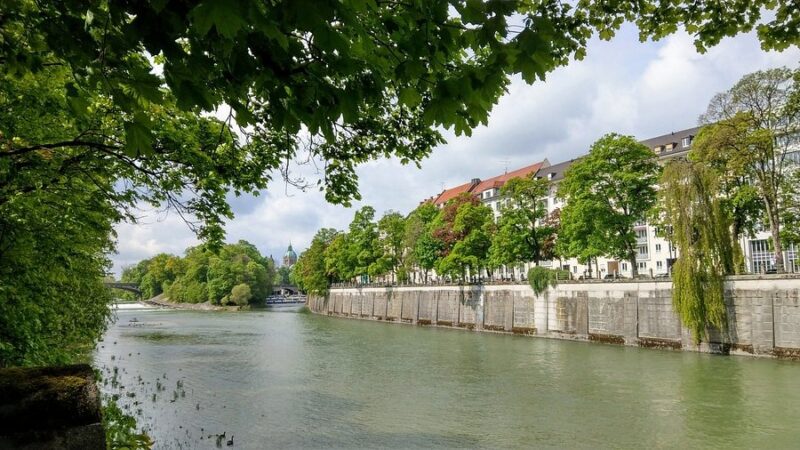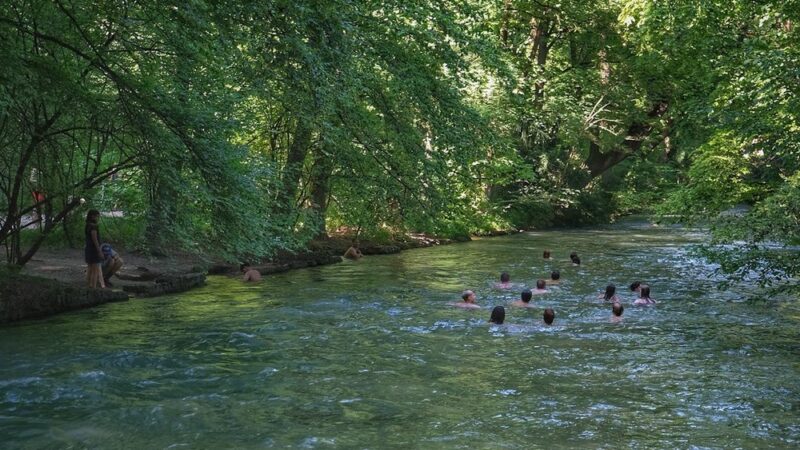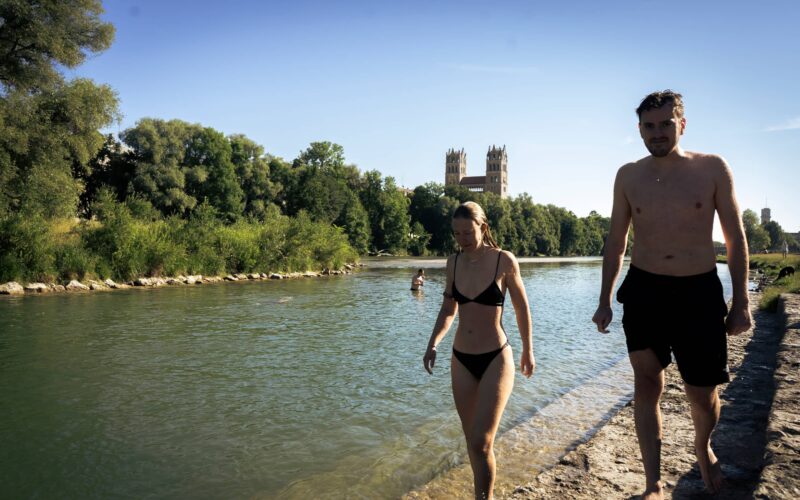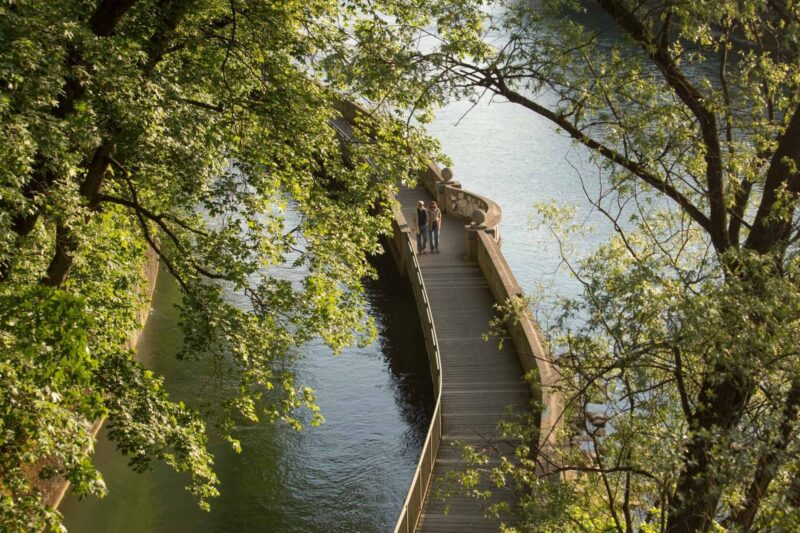Few European cities are as closely tied to their rivers as Munich is to the Isar. Flowing from the Alps straight through the Bavarian capital, the Isar has shaped not just the geography but also the culture of the city.
For locals, it is far more than a body of water cutting through town. It is their outdoor living room, their running track, their picnic spot, and their quiet retreat from the city’s fast pace.
Walking along the Isar offers a mix of nature, history, and authentic Munich life that no guidebook can fully capture.
Starting a Walk in the City Center

One of the most popular starting points for a stroll is the stretch between the Deutsches Museum and Gasteig.
Here the river widens, and you’ll often find locals sitting on the steps with a book in hand. Cross the bridges and you’ll catch striking views of the city skyline with church spires peeking above the treetops.
This central part is also where people-watching becomes part of the experience. Students, families, and elderly Munich residents share the same space.
If you’re spending time in Munich and want to balance sightseeing with something more relaxed, this is where to begin.
For those traveling alone, especially on longer stays, companionship can add another layer of comfort.
Some visitors even combine their stay with lifestyle experiences beyond the usual tourist path.
For example, Louisa Escort caters to guests who prefer company while enjoying cultural evenings or simply walking along the river.
This kind of service reflects Munich’s mix of tradition and modern openness, blending discreetly into the city’s social fabric.
The Southern Paths Toward Flaucher
Heading south, the Isar transforms. The Flaucher area is one of Munich’s best-kept secrets for those who want nature without leaving the city.
Gravel islands scatter across the river, creating shallow areas where families let their children play in the water. Barbecue smoke often curls up from improvised picnic spots, and the whole area carries a holiday atmosphere on warm days.
Walking here feels more like being in the countryside than in Germany’s third-largest city.
The paths meander through wooded zones, and in quieter hours, you might spot herons or even beavers along the banks.
Locals often recommend this part of the river to visitors who want to see how Munich balances urban life with unspoiled landscapes.
Northern Stretches and the English Garden Connection

To the north, the Isar leads toward the English Garden, one of the world’s largest urban parks. The connection between the two is seamless, allowing you to walk for hours without leaving green space. This is where joggers and cyclists dominate, but walkers will still find quiet pockets.
The Monopteros hill offers a sweeping view, while beer gardens such as the one at the Chinese Tower invite you for a pause.
In winter, when the leaves fall and the air sharpens, this northern stretch becomes a completely different experience.
Instead of picnic blankets, you’ll find cross-country skiers sliding along the banks. The Isar never loses its role as a gathering point, it only changes its character with the seasons.
Bridges, Landmarks, and Cultural Stops
Part of the joy of an Isar walk lies in its bridges. The Reichenbachbrücke and Corneliusbrücke are popular for their central location, but the Maximiliansbrücke adds a touch of grandeur with views toward the Maximilianeum, the seat of Bavaria’s parliament.
Each crossing offers new perspectives on the water, and locals often use them as meeting points.
Nearby neighborhoods bring culture into the walk. Haidhausen, with its cozy cafés, lies just above the Gasteig.
Glockenbachviertel, on the other side, is one of Munich’s liveliest quarters, filled with bars, restaurants, and galleries.
This interplay of water and urban culture makes a walk by the Isar never just about the river but also about the life unfolding around it.
Practical Tips for Visitors
If you want to enjoy the Isar as locals do, a few practical points help:
- Wear comfortable shoes – Paths are mostly gravel and grass.
- Bring snacks or drinks – Many residents enjoy their own small picnic.
- Check the weather – Summer storms can roll in quickly from the Alps.
- Respect nature – Keep the river clean, as locals are proud of its restored beauty.
Walking is free, and unlike many city activities, it doesn’t require planning. Yet the reward is huge: a sense of belonging, even if only for a day.
Why Locals Keep Returning

For Munich residents, the Isar is more than a backdrop. It is woven into their daily life.
Someone might cycle along it to work in the morning, take a swim on a hot afternoon, and meet friends on the banks in the evening. The routine creates an attachment that visitors can sense when they join in.
What makes the river unique is its accessibility. Unlike other European capitals where you might admire a river only from a bridge, here you can walk directly at water level, skip stones, or simply lie in the grass.
This closeness explains why the Isar is not just for tourists but remains a true local treasure.
Final Thoughts
Isar river walks capture the essence of Munich: a city that values its traditions yet knows how to enjoy life outdoors. They offer both quiet reflection and lively scenes, history alongside modern leisure. For travelers seeking authenticity, walking the Isar is not optional, it is essential.
Whether you join locals at Flaucher with a picnic, cross bridges into lively districts, or simply take a slow walk with the sound of rushing water beside you, the Isar will leave its mark. In a city famed for its beer halls and grand architecture, it is the river that locals turn to for balance, and visitors are always welcome to share that rhythm.

